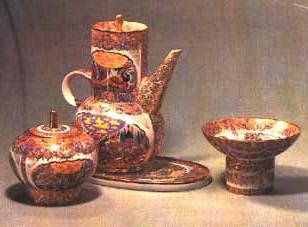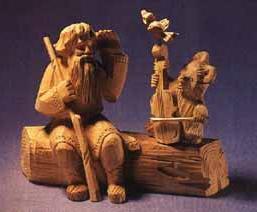The basis of this art is the need for beauty and comfort. Items with a household purpose, often used by a person, need not only a reliable structure, but also a beautiful form. If a person will be surrounded by ugly objects with severe forms, then the mood will quickly fade away, and this is very harmful to health. Applied art covers an extensive category of everyday consumption items: dishes, textiles, home furnishings, weapons, cars, suits, jewelry, jewelry and things for children.

Types of arts and crafts differ in the method of processing blanks, the material itself, its properties of texture and texture. When processing metal, casting, embossing, forging and engraving are often used; less often - carving and painting. In general, carving, painting and inlay, as types of decoration of decorative products, are well applicable for wood, ceramics and glass. Textiles and leather can also be inlaid if there are sufficiently solid bases, but, nevertheless, embroidery and tacking techniques are usually used for these materials. For light fabrics, batik art is popular - it is painted with liquid paints using a reserve composition or wax.
Applied art is not only a form of activity, but also an integral attribute of the social environment: it enlightens people culturally and instills aesthetic values in them. The surrounding objective world is always part of an architectural concept. The shape and purpose of objects inside it often depends on the form of construction, therefore, in a single territory, the concepts of architectural style and style of decorative art objects are closely intertwined. Originating in ancient times, decorative and applied art has become the most important area of folk art, developing on an industrial scale.

In the city of Moscow is the All-Russian Museum of Decorative, Applied and Folk Art, unique in its content, which stores many collections created from the late 18-20 centuries. Decorative and applied products of Russia of this period amaze with their antique value and escort everyone who touches them with their eyes to their distant and mysterious eras. Collection items are fragile witnesses to a change in fashion, way of life and grandiose political changes. The museum building itself, whose facade was periodically renovated during the same period, is a monument of Russian architecture.

The Museum of Applied Arts stores both private collections donated to the museum and items bearing the role of historical heritage. The variety is inspiring: European, Russian and Oriental fabrics delight the eye; all kinds of metal art and jewelry; fine collection of porcelain; incomparable glassware and even a rare collection of samovars. The museum’s library contains unique manuscripts and books. There are no analogues in the collection of works of Russian Art Nouveau, the collection of Soviet propaganda art, as well as the magnificent works of contemporary artists for whom decorative and applied art is a way of life.